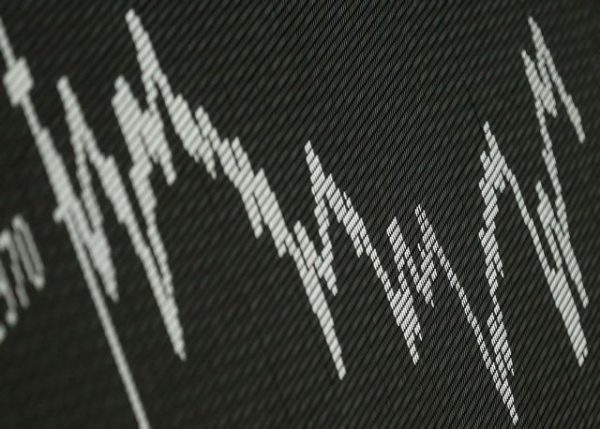
Inflation in Greece was 5.4% in March 2023 (from 6.5% in February), while 6.9% is the corresponding rate at the Eurozone level, according to Eurostat’s preliminary data.
Eurozone annual inflation eased from 8.5% in February, according to Eurostat’s estimate. In February, consumer prices had increased by 6.5% in our country, according to Eurostat, and by 6.1% according to ELSTAT. At the same time, today’s Eurostat figures show a rise in monthly inflation of 1.6%, as recorded in the table below, which shows that product accuracy remains.
The slowdown is almost entirely due to the drop in energy prices compared to March last year, which preceded Russia’s invasion of Ukraine.
However, the index excluding energy and food prices (structural inflation) accelerated slightly to 7.5% from 7.4% in February.
Looking at the main components of euro area inflation, food, alcohol and tobacco are expected to have the highest annual rate in March (15.4%, up from 15.0% in February), followed by non-energy industrial goods (6.6%, vs. 6.8% in February), services (5.0%, vs. 4.8% in February) and energy (-0.9%, vs. 13.7% in February) .
The forecasts of the Ministry of Finance
The forecasts of the Ministry of Finance prescribe a slowdown in inflation, that is, prices will increase at a reduced rate for the whole year and the general index will be formed at the end of 2023 around 4.5%. According to the winter forecasts of the European Commission (February 2023), the average annual inflation for the entire year 2023 is predicted at 4.5% (5.6% in the Eurozone) and for 2024 at 2.4% (2.5 % in the Eurozone).
The financial staff report that we will not see a reduction in prices, but that prices will increase at a reduced rate, which was officially supported by the Minister of Finance Christos Staikouras, which implies that the accuracy will continue in the coming years months.
The Budget Office of the Parliament also sounded the “bell” about inflation, which states the following: “Inflation shrinks the real income of a large part of households, especially the most vulnerable, resulting in an increase in social inequality and social tensions. The problem is mainly found in food prices which, despite the relative de-escalation of the general inflation index, show a high growth rate. In addition, the pressure on vulnerable households and businesses is intensified by the increase in interest rates that burdens their debt servicing.”
Dropping standard of living
The result of the high prices is the decline in the standard of living of the citizens. For example, in September 2022 the poorest households would have to increase their consumption to 171% of their disposable income in order to maintain the standard of living they had in 2021. According to the study published in the framework of the Eteron – Institute project for Research and Social Change, for Economic Justice, 1/4 of this extra consumption was subsidized by the government, which means that, taking into account countervailing measures, this income group was actually burdened by the steep rise in prices by 13%.
Inflation last month, on an annual basis, slowed to 6.5% from 7.3% in January, while on a monthly basis, it registered an increase of 0.2%. Based on Hellenic Statistical Authority-ELSTAT’s data, consumer prices in Greece ran at a rate of 6.1% in February. The annual increase stems mainly from food and non-alcoholic beverages (increase in the price level by 14.5%), hotels-cafes-restaurants (7.8%) and transport (7.9%). They are followed by the categories of durable goods, household goods and services (10.2%), clothing and footwear (6.8%), other goods and services (5.7%), health (5.3%), leisure and cultural activities (3.6%), education (2.2%) and alcoholic beverages and tobacco (1.8%).
New price increases are coming, while consumption is dropping.
At the same time, 7 out of 10 industry and retail executives say they have decided to go ahead with another round of price increases this year, according to data presented by NielsenIQ CEO Vaios Dimoragas at the company’s event today Nielsen – Shopper Trends Event 2023.
Particularly, from a sample of 32 managers from organized retail and industrial companies, it appears that 68% answered that there will be further price increases this year.
According to the survey, the new price increases will move up to 5% according to 35% of the respondents, while 1 in 2 answered that the price increases will reach up to 10%. There is also a small percentage of 6% who answered that price increases will reach 20%.
What is striking is that the price increases will take place when consumers, exhausted by rising prices, reduce the purchases of even basic food, as well as basic consumables.
In particular, 50% of respondents predict a decrease in consumption due to inflation and price hikes, however 40% expect stability in sales volume at -1 to +1%.
Latest News

Athens Int’l Airport: 16.2% EBITDA Increase and 16.5% Passenger Growth in Q1 2024
Following the strong performance in the first quarter, the company revised its annual passenger traffic forecast for 2024 to 29.9 million passengers, a 6.3% increase (or roughly 1.8 million passengers) from 2023 levels.

Oxford Economics Report: Greek Economy is Just Below Risk Zone
However, the report points to a persistent challenge in the form of commercial credit risk, which remains high at 8 out of 10, ranking Greece 104th internationally

Deadline for Postal Vote Registration Expires on Mon.
More than 157,000 Greek citizens had registered on the relevant online platform so far

Orthodox Palm Sunday Today; Shops Open in Greater Athens-Piraeus Area
Orthodox Holy Week begins on Monday, April 29, and ends on Sunday, Easter Sunday or Great and Holy Pascha (May 5)

Greek Retailers Remain Optimistic About Easter Shoppers’ Turnout
While stores are expected to be open on Sunday, April 28, the majority of Easter shoppers will likely do their shopping during the Holy Week, following the deposit of Easter bonuses

Europeche: Greek Apricot Production Recovers
Europeche forecasts the production will bounce back despite a slight decrease in varieties attributed to high winter temperatures

Bank of Greece (BoG): Business-Household Deposits Up 1,675bln in March 2024
In March 2024, the monthly net flow of credit to the general government was negative by 469 million euros

FT: Greece’s Economic Rebound a Balance of Growth and Poverty
Eurostat data revealed a significant 10.8% drop in Greek public debt relative to GDP in 2023, alongside a 2% economic expansion, outpacing Germany's performance.

Lavrio Port Authority Next Up for Privatization
A deadline for the submission of expressions of interest is May 14, 2024

Eurostat: Greece Records Largest Drop in Natural Gas Prices in 2nd Half of 2023
The price of electricity and natural gas in Europe was down following a substantial surge that began before the Russian invasion of Ukraine and peaked in 2022











































 Αριθμός Πιστοποίησης Μ.Η.Τ.232433
Αριθμός Πιστοποίησης Μ.Η.Τ.232433